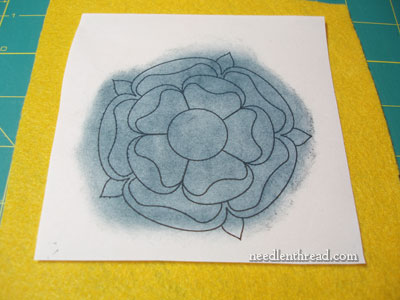September 16, 2011
Goldwork on Velvet: Passing Thread
I love gold passing thread! I’ve said it before, and I’ll probably say it again! It always looks nice, no matter how it’s used. It’s just a great metal thread.
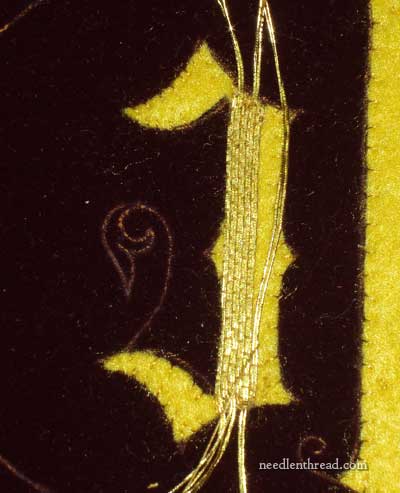
September 16, 2011
I love gold passing thread! I’ve said it before, and I’ll probably say it again! It always looks nice, no matter how it’s used. It’s just a great metal thread.

September 15, 2011
I’ve been tacking a lot of felt padding for goldwork lately. I thought I’d be a lot farther along two projects that involve felt padding, but hey… at least there’s some progress going on! (I feel as if I say that a bit too much – becoming an excuse, perhaps?)
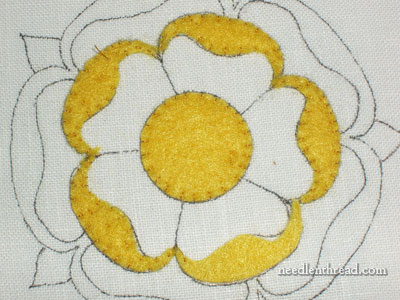
September 14, 2011
Following up on Anne’s article yesterday on tips & techniques for using flat silk, here’s a photo of her embroidery set up, with the flat silk hitched onto her awl, which is stuck in a hole in her embroidery frame! I received lots of questions via e-mail about this method of securing the silk, so Anne snapped a photo!
I’ll also answer a few other questions about flat silk, and share a couple tips.
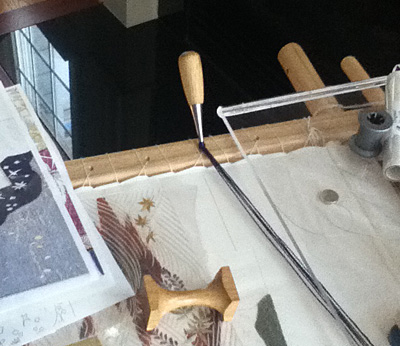
September 13, 2011
The following article is by Anne Gomes, who generously offered to write up some tips on using flat silk to share with you. (Thank you, Anne!) If you’ve ever worked with Japanese silk thread, you know that it can be quite difficult to get used to! Anne’s tips will come in handy if you ever want to venture into the world of flat silk threads. The tips are great for working with any flat (untwisted) filament silk, whether Japanese silk or not!
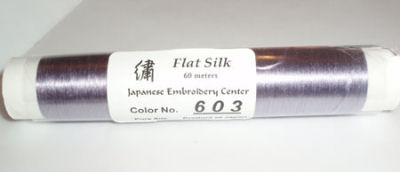
September 12, 2011
Well, you asked for it. You didn’t ALL ask for it, but some of you did! Remember last week when I mentioned my workroom, where I do most of my needlework?
I received quite a bit of feedback and quite a few questions. I thought I’d show you a “reality” picture – pretty much what things look like at the end of a day.
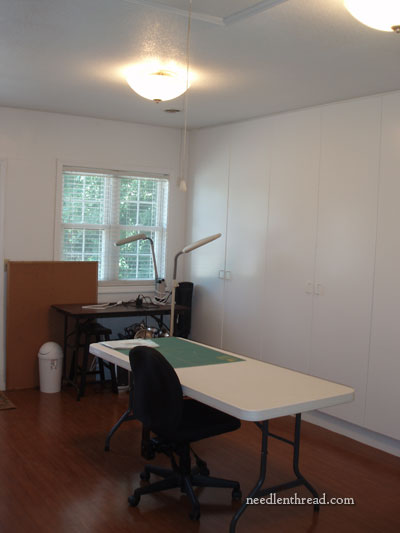
September 10, 2011
Art museums always fascinate me. My favorite part of any art museum is the galleries of paintings. Oh, sure, it’s nice to see artifacts and sculpture and so forth, but I really love looking at paintings. One thing I always look for in paintings is textiles. To me, there’s nothing more amazing than an artist’s rendition of embroidered clothing, fine lace, and so forth.
Often, when I’m squizzing around the internet looking for inspiration, I end up in online art galleries. Besides making note of art that features textiles, I find myself looking at color palettes. Looking at the colors that the masters have used in their work can be an interesting lesson in color, and with technology today, it’s pretty easy to extract color palettes from an image.
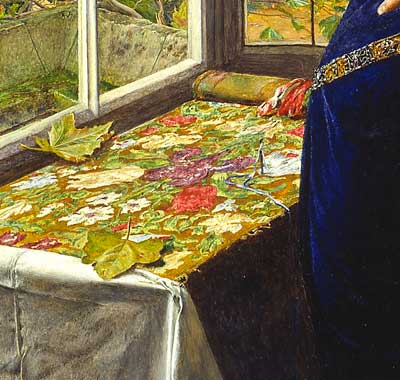
September 9, 2011
A little background, so you can see where I’m coming from: felt is used to pad goldwork. That is, it’s cut into the shape of whatever area is being filled with goldwork threads, sewn onto the ground fabric, and then the goldwork threads are worked on top of it. Using felt accomplishes a few things: 1. it lifts the goldwork a little bit; 2. it “fills” the background behind the goldwork with yellow, so that the ground fabric doesn’t peek through; 3. it gives the goldwork some shape and a cushion.
My favorite felt for padding goldwork is wool felt, but it’s not always easily available in gold or yellow. If I want it, I usually have to special order it online. So I often use craft felt that comes off a bolt, and it suffices. Bolted felt (the stuff you buy by the yard at the fabric store) is much firmer than the craft felt squares that you can buy for a few cents.
When padding goldwork with felt, you have to transfer your design onto your ground fabric and also onto the felt, because you want to be able to cut the exact same shapes from the felt. There are several ways to transfer a design onto felt in order to cut it for goldwork use, and one of them is prick and pounce.
